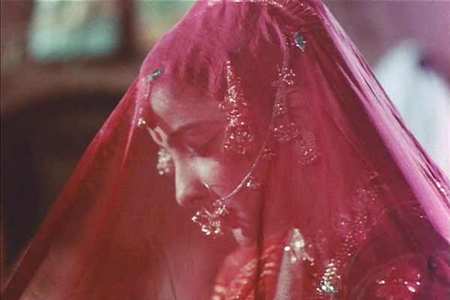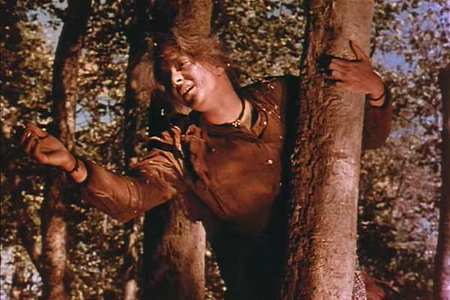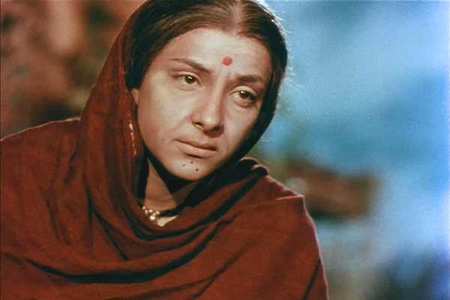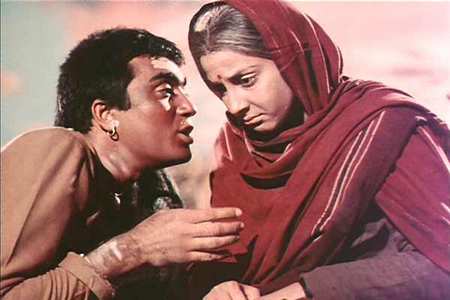Review of Mother India
Introduction
A remake of Mehboob’s earlier classic stern black and white film Aurat (1940), Mother India revolves around two subjects; womanhood & patriotism and how the two linked makes this a breathtaking view as it has nor has ever again been done so beautifully. Many think being a patriot is all about fighting a battle at wars, working for the authorities like the government, the police force, or even being a journalist. But living a life in a rural village can just as be as patriotic. To plough the filed with your bare hands, too raise your children on your own, & making sure that others come first are just some examples the character of peasant woman Radha, outstandingly played by Nargis, does inorder to survive. She is both strong, and a tribute to women not just in India but to the entire in the world.
Performances in this film stand out with the excellent cast, and this further enhances not only viewing but also the screenplay that has imagery reflecting the themes of the film in a poetic manner. The film’s director understands how to present rural life on screen, being raised in one himself. He does this with much detail with the characters, situations and settings. What makes this a great film to view is the way he presents his facts. Not with drama or Hollywood realism but rather with a more passionate notion, that gives a sense of being larger then life. Sure at times the film plays with theatrics and melodrama, but for good purposes to ensure we understand exactly what the characters undergo through their emotions, rather then just guessing.
The director also uses music and songs to play an important part in the story telling, and music director Naushad scores wonders here. The music is suited to the tone, environment and narrative of the film. With memorable lyrics and unforgettable music the soundtrack is certain one of the best to come out from Indian cinema.
The technical values are superior in this film, and still stands up to the type of movies being made in Indian cinema presently. With beautiful cinematography, fine art direction, admirable use of settings/environments and bright and bold colours of Geva-color, the film still remains a reference point to present directors in India and film students across the world. Mother India (1957), Sholay (1975), Maine Pyar Kiya (1989), & Dilwale Dulhania Le Jayenge (1994) are among the limited few Hindi films that are used to best describe what ‘bollywood’ is.
Mother India released in 1957, and became critically acclaimed with everyone around the world. It is considered to be the most heard off Indian film around the world, and was the first Hindi film to be nominated for an Academy Award for best foreign film 1958. The film has never lost its momentum, and even continues to be popular with new-found audiences, within the youth market.

Video
TThe film is presented in its original aspect ratio of 1.33:1, as original shot by the filmmakers when the film first released. In the 1970’s Mother India was re-released in widescreen during the zenith of cinemascope in India. But that version had to crop the top and bottom of the screen inorder to achieve the false 2.35:1 wide aspect ratio. Thankfully DEI have gone to the original vision of the film so now people can enjoy everything on screen without worrying if it is cropped.
Also many different versions of this film have been released with cuts to it made by distributors, but again this DVD version is the longest running time of the film to have been released on the home format. Word is that an existing print contains many more scenes, but this is yet to be found so it remains a myth.
The DVD technically presents no encoding problems like compression artefacts and edge enhancement, while shimmering and moiré effects makes only a vague appearance. DEI have done there job successful into encoding what looks to be a very difficult film, since it presently their oldest title. But when it comes to the print they have used I feel so much more could have been done.
Naturally, as with nearly all DEI titles, this is taken from an interpostive 35mm print and clearly DEI have done quite a lot of restoration work. Wear and tear makes only but a slight appearance and for a title this age the film looks fresh, and very clean. Only the odd reel changes do we see white and black blemishes which aren’t as disturbing.
Images look as very detailed, and not once does it loses its momentum. The picture information is very accurate and sharp. A couple of scenes do look quite fragile, as well as a tad soft. This is due to extensive damage on the print and cannot be saved. Yet even with these moments it the film remains to be the definitive yet available for home viewers.
But the buck for praises stops here as I look at the colour motif of the film. When the film first released “bold”, “vibrant” and “vivid” colours was describe by those who saw it at the big screen. Naturally being a Geva-color film this is expected. However on viewing this DVD the green field seems pale and overly brown and yellow hues are noted. Due to the age and poor keeping of the film in India the colour has disappeared over the years.
DEI while clearing up the film for wear and tear could have done scene by scene accurate colour correction work, but this is a very costly and lengthy process. Still a massive film of this nature could have undergone some more additional work to make it even more brand spanking fresh. But this version is one of the best older Indian title to have ever come out, and DEI should be credited on that.

Audio
The Dolby Digital mono track has been preserved as originally recorded. With some light hissing and noises heard, due to the age of the 35mm negative, it remains audible, clear and easy to understand. At best the track can be described as being as good as it can get with its limitations.

Features
The menus are thematic, and box design is similar to the one used for the EROS international version. But again this film, being a top movie, could have had better packaging design which would have made this a special product. Surprisingly no extra supplements were made for this feature. I’m sure noted film personalities or others involved in production would provide interesting feedback on the film.
English Subtitles are on dialogues only, which means the songs, that are a integral part of the story telling, is missing. DEI have stated that they will rectify this on a later release.

Conclusion
With what they had to work with DEI provides another winner in terms of quality, yet so much more could have been done to make this title a special one. This DVD is an improvement to the UK EROS DVD version that has similar picture quality (as it was done by DEI too), but the sound on that disc had been encoded into 5.1, meaning high levels of sound distortion. Thankfully the sound on this version is presented in its original format.
Your Opinions and Comments
Be the first to post a comment!